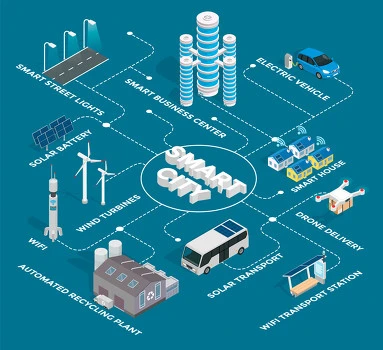2025-10-10
Hybrid power system (or just "hybrid power") is a configuration that combines two or more energy generating or storing technologies—such as solar, wind, battery storage, and periodic backup generators—to provide a more stable, more efficient, and more reliable electricity supply. With one source unable to meet the demand in present times, hybrid systems bridge gaps in reliability and continuity.
Within the first 100 words: hybrid power systems attempt to overcome the renewability intermittency and shortfalls of fossil fuel generation by intermixing the sources for enhanced performance.

A typical hybrid power system includes:
A hybrid energy system "consists, at least, of two different energy technologies that operate on alternative energy sources" for better reliability and flexibility, as reported by ScienceDirect.
Iberdrola further cites that hybrid plants "employ photovoltaic energy during sunny weather and another one, like wind, during cloudy days, therefore guaranteeing a more stable and efficient supply."
1.Reliability & Stability
The sun or wind alone cannot guarantee continuous power. A hybrid system guarantees that whenever one fails, another takes up.
2.Efficiency & Cost Savings
Through optimizing the mix, operators will minimize diesel fuel usage (or grid importation) and lower cost of operation.
3.Environmental Benefits
Hybrid configurations lower carbon emissions through minimizing the reliance on fossil fuels.
4.Reliability in outages or calamities
As stated by a U.S. hybrid power plant study, hybrid combinations of wind, sun, and battery resources added high value in reducing lost load during hazard events.
National Renewable Energy Laboratory
5.Resource Complementarity
Wind and sun peak at offset times—hybridization exploits this complementarity to balance output.
Hybrid power systems vary by application. Some common models:
| Configuration | Components | Typical Use |
| Solar + Battery | PV + Li-ion storage | Off-grid residences, micro-grids |
| Wind + Diesel + Battery | Wind turbines + diesel generator + battery | Outlying villages |
| Solar + Wind + Battery | All three renewables + storage | Utility or large-scale hybrid stations |
| Renewable + Backup Generator | Solar or wind + generator | Grid tie or reliability needs areas |
A wind, battery, and solar hybrid plant in a case study in Iowa offered outage prevention during a 48-hour tornado event through optimized dispatch and lost load reduction.
Another example: For a Malaysian Penang resort, an "islanded hybrid microgrid" combined PV, diesel, wind, and battery to provide load and manage surplus energy.
Hybrid power systems utilize a control strategy (EMS) to:
1.Track resource availability (solar irradiance, wind speed).
2.Detect load demand.
3.Dispatch energy from generation/storage sources in priority order.
4.Charge storage if generation exceeds load.
5.Utilize backup sources when necessary.
If you are wondering: how does it know when to charge battery vs run generator?—the EMS utilizes scheduling, forecasting, and algorithms to optimize for cost, state of charge, and load requirement.
Limitations & Challenges
Maintenance complexity, especially in remote or hostile environments.
A review paper on hybrid renewable systems sketches out these challenges in the process of discussing compensation and optimization techniques.
Most wonder whether hybrid systems can fully replace conventional grid power. In some off-grid or remote situations, yes—when sized and controlled correctly, they can provide 100% of needed electricity. In larger grid systems, hybrid systems tend to augment grid capacity and shave peak loads.
Another question: Hybrid power systems for only large installations? Far from it—village- or residential-scale solar + battery + small generator hybrid systems are the norm for rural electrification. Small wind + solar hybrids are even promoted for houses by the U.S. Energy Department.
In this rapidly evolving energy era, hybrid power systems are coming forward not just as a choice, but in most instances the optimum solution—offering equilibrium, dependability, and sustainability at scales and geographies.